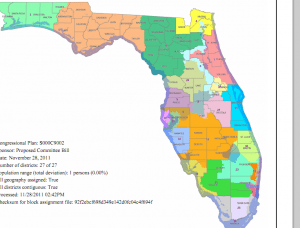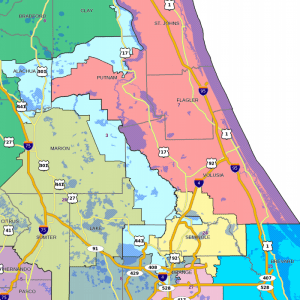The Senate Reapportionment Committee released a rough draft of new political maps for the state’s Senate and Congressional districts, giving politicians and interest groups their first look at an official effort to redraw the state’s political boundaries.

“Months ahead of past redistricting schedules and after the most open, transparent and interactive process in Florida history, the Senate committee has produced a product which is fair, sensible and faithful to the law,” Reapportionment Chairman Don Gaetz, R-Niceville, said in a news release accompanying the maps.
But the maps, produced by the staff of Gaetz’s committee as part of the once-a-decade redistricting process, were already running into resistance from Democrats and groups who expected to benefit more from the line-drawing exercise.
Florida Democratic Party Chairman Rod Smith laid into the maps, saying they ignored the anti-gerrymandering Fair Districts amendments approved by voters last year.
“Today, Florida Republicans have taken a state — which experts have long considered one of the most malapportioned states in the country — and worsened it,” Smith said. “In doing so, they have chosen to thwart the will of 63-percent of Florida voters by proposing maps that are aimed at incumbent protection and partisan advantage — the very things which Florida’s Constitution now prohibits.”
Smith pointed out that, among other things, the map radically recasts the district currently held by Senate Minority Leader Nan Rich, D-Weston, a member of the Reapportionment Committee who is leaving office next year because of term limits. Rich’s district would move from central Miami-Dade and southern Broward counties to encompass western Palm Beach and Broward counties.
The district, which went for Democrat Alex Sink by 17 points in the 2010 gubernatorial election, still appears to be reliably Democratic.
But the committee’s map would appear to be more favorable to GOP incumbents. Under the current map, President Barack Obama won 20 Senate districts, including several held by Republicans. The new map would reduce that number to 16.

Despite adding two seats to the state’s congressional delegation, the new map might not substantially increase the number of Republicans elected from the state.
Republicans currently hold a 19-6 edge in the delegation, but Republican Sen. John McCain won just 15 seats in the 2008 presidential election; Obama carried 10. That split would be 15-12 under the new map.
And while the congressional plan would add a Latino-influence seat in Central Florida, the plan does not go as far as community leaders had hoped. Local activists had pushed for a map that was 46 percent Latino, 12 percent black and 34 percent white, with the Latino vote largely composed of Puerto Ricans who have moved to the area in droves over the last decade.
The Hispanic voting-population under the map released Monday would be 40 percent, slightly smaller than the 43 percent plurality of white voters.
“We’re important, but not enough,” said Emilio Perez, president of the Central Florida Redistricting Committee, an advocacy group.
Perez did note that the Senate included a Latino district in Central Florida in the Senate map, something else community leaders had sought.
“There’s a good opportunity to elect one of our own,” he said.
By Brandon Larrabee


